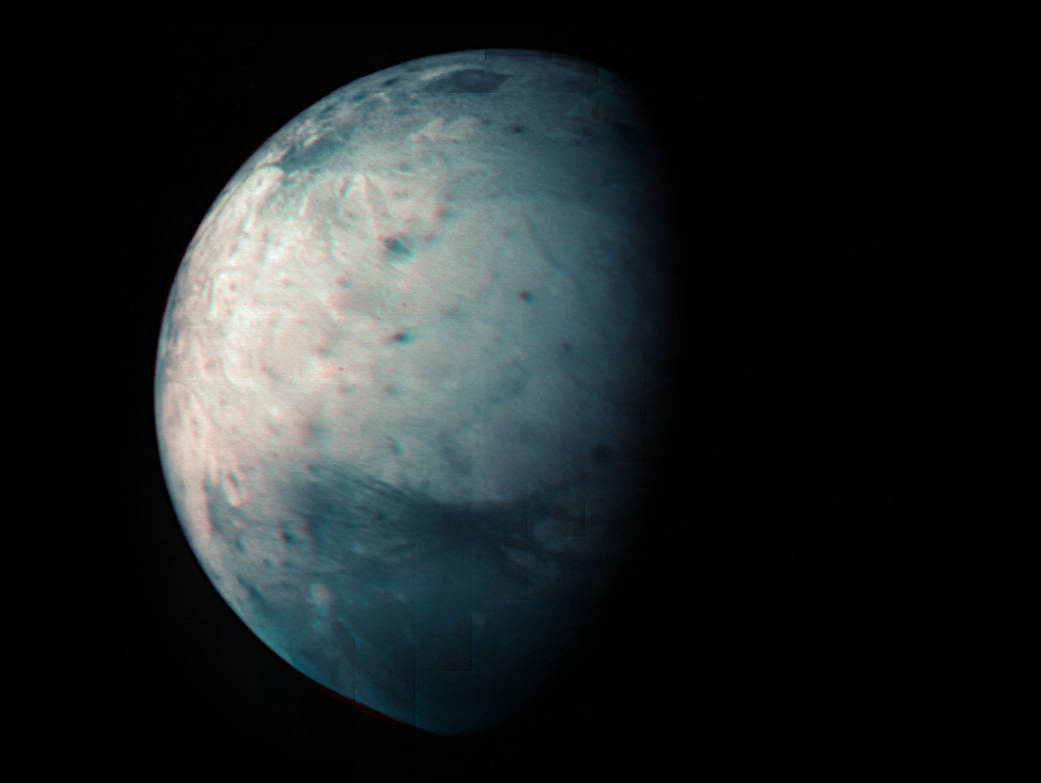This infrared view of Jupiter’s icy moon Ganymede was obtained by the Jovian Infrared Auroral Mapper (JIRAM) instrument aboard NASA’s Juno spacecraft during its July 20, 2021, flyby.
JIRAM’s infrared instrument developed this image during recent flybys of Jupiter’s mammoth moon to create this latest map, which comes out a decade after Juno’s Aug. 5, 2011, launch.
The Juno science team produced a new infrared map of Ganymede by combining data from three flybys, including its latest approach on July 20. These observations by JIRAM, which “sees” in infrared light not visible to the human eye, provide new information on Ganymede’s icy shell and the composition of the ocean of liquid water beneath.
JIRAM was designed to capture the infrared light emerging from deep inside Jupiter, probing the weather layer down to 30 to 45 miles (50 to 70 kilometers) below Jupiter’s cloud tops. But the instrument can also be used to study the moons Io, Europa, Ganymede, and Callisto (known collectively as the Galilean moons in honor of their discoverer, Galileo).
Image Credit: NASA/JPL-Caltech/SwRI/ASI/INAF/JIRAM
























